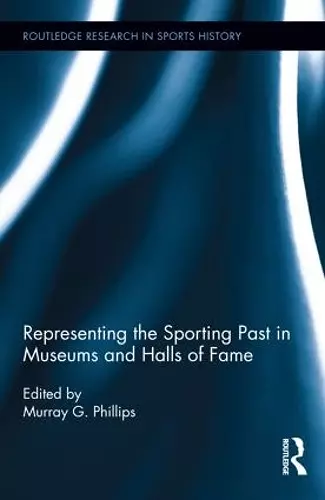Representing the Sporting Past in Museums and Halls of Fame
Format:Hardback
Publisher:Taylor & Francis Ltd
Published:21st Dec '11
Currently unavailable, and unfortunately no date known when it will be back
This hardback is available in another edition too:
- Paperback£55.99(9780415719674)

We live in a "museum age," and sport museums are part of this phenomenon. In this book, leading international sport history scholars examine sport museums including renowned institutions like the Olympic Museum in the Swiss city of Lausanne, the Babe Ruth Birthplace and Museum in Baltimore, the Marylebone Cricket Club Museum in London, the Croke Park Museum in Dublin, and the Whyte Museum in Banff. These institutions are examined in a broad context of understanding sport museums as an identifiable genre in the "museum age", and more specifically in terms of how the sporting past is represented in these museums. Historians explain, debate and critique sport museums with the intention of understanding how this important form of public history represents sport for audiences who see museums as institutions that are inherently reliable and trustworthy.
'An important book that redraws the map by which we understand the variety of sporting museums, halls of fame and exhibitions. The authors inspire and challenge all sports historians to engage more closely with the tangible evidence of sport’s material culture, and suggest new pathways for future research in this field.' – Margaret Birtley, National Sports Museum, Melbourne
'Sport museums are a special breed. Sport is by nature a competitive and dynamic cultural phenomenon, much less concerned with the past than with the present or the near future. Nevertheless, looking backwards nostalgically to and reminiscing about the glory days of famous athletes or successful clubs is part of the sports lore, both in terms of material and immaterial culture. This book depicts the variegated landscape of sport museums, ranging from local halls or walls of fame to internationally renowned historical collections. Phillips and his co-editors confront sport historians with these ‘lieus de mémoire’, where the sporting past is not ‘deep-frozen’ for further conservation, but often uncritically glorified and sanctified. ‘The museum is the message’, but which message? … that’s the question.' –Roland Renson, Prof. em. K.U.Leuven, chairperson Sportimonium, Belgium
'Sports museums and sports halls of fame have become an ubiquitous part of the heritage landscape. Not only do many teams, leagues, individual sports, famous venues, and champion athletes have dedicated museums, sport has also become part of more generalist museums, sport sites have been increasingly recognized as important locations in sharing and revealing our past, and sport heritage has been recognized as a potent and powerful tourist attraction.
The chapters in this text are, by and large, interesting and engaging, though a few notable contributions stand out from the rest. Mark O’Neill and Gary Osmond’s chapter about the changing use of Phar Lap, the champion Australian racehorse, seamlessly fuses the work of the historian with that of the heritage manager, understanding that museum artefacts have their own history and are interpreted differently depending on the needs and values of the present in which they exist. Douglas A. Brown’s chapter about theWhyte Museum in Banff, Canada reveals that, though the museum rarely explicitly exhibits sport history, its existence is largely the result of the Canadian Rockies having a sport tourism heritage through mountaineering, skiing, and outdoor recreation.
Ultimately the text offers valuable insights for sport, recreation and leisure historians who are interested in public representations and interpretations of the sporting past, as well as offering practitioners ideas for linking sport history to more applied forms of public and interpretive heritage programming. Furthermore, it provides an important and timely contribution to the literature on sports museums, public sport history, and sport heritage, and is essential reading for anyone interested in these topics.'- Gregory Ramshaw, Clemson University, USA
ISBN: 9780415883757
Dimensions: unknown
Weight: 690g
284 pages